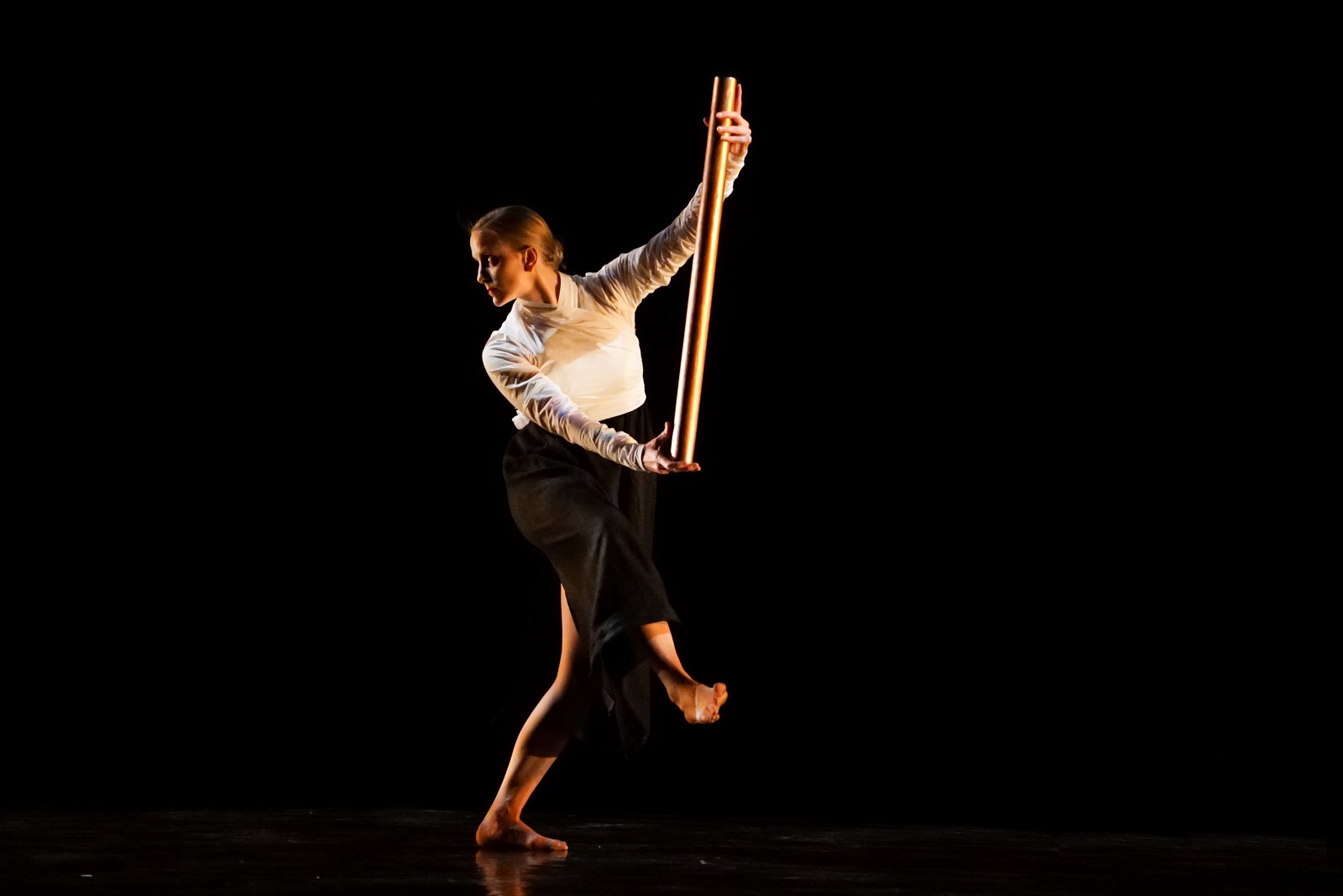
Serenade
Premiere
Center for the Arts at George Mason University
George Mason University, Center for the Arts
Music by arrangement with Peer International Corp., publisher and copyright owner.
Media Gallery
- images

Details List
| Choreography | Mark Morris |
| Music | Lou Harrison - Serenade for Guitar |
| Costume Design | Isaac Mizrahi |
| Lighting Design | Michael Chybowski |
| Instrumentation | guitar and percussion |
| Number of Dancers | 1 |
| Runtime | 12 minutes |
Details
The Making Of My Dance
By MARK MORRIS
Published: March 23, 2003, New York Times
I RARELY tell much about my creative process, but if you feel like making up a dance of your own, this might come in handy.
I started thinking about a new solo for myself a few months ago. The ”Serenade for Guitar” (with optional percussion) by Lou Harrison is a piece of music I have been drawn back to over the years. It is so tender and finely webbed, so all over the world, that I realized it could be the basis of a new kind of dance. Or, at least, one I’ve never seen or done before. I ordered the printed score to decode the beautiful and delicate structures that I’d guessed at from listening closely to a very good recording.
Nearing the beginning of the two-week rehearsal period I had allotted for this dance, I had the idea of playing the castanets during the final movement. I considered calling Mr. Harrison to ask his permission to add another rhythm element. I never called. A day or two later I learned that he had died en route to a festival of his own music in Columbus, Ohio. I had imagined him giving me a long-distance eye-roll over the line from his home in Aptos, Calif., a sigh and a ”Go ahead if you must, you’ll do it anyway.” I did it anyway, Lou. I humbly and proudly dedicate this dance to the Divine Mr. Harrison.
Whenever I work on a dance for myself, I set the moves on other dancers in my company so that I’m not just improvising stuff that feels good to do. I choreograph something and the others learn it and dance it back to me, and I can revise and edit what I’ve done so far. They also remember steps better than I do and can coach me and keep track of the music. For this piece, which I named ”Serenade” (what a good title for a dance!), my accomplices were Maile Okamura and Matthew Rose. They ensure that I won’t just sit around in the studio waiting for something to happen. They make me practice.
”Serenade” is in five movements:
ROUND (FAST, STRONGLY ACCENTED)
The Round is the only section of the music with no percussion part, so I decided to limit how much of me would dance: only from the waist up. I made up some wild and precise gestures and tried doing them in a full squat. The squat soon became a box to sit on, as I learned that I also needed to be able to walk when I stood up a minute later.
AIR (FREE AND RHAPSODIC)
The Air has a satisfying, deep gong that is struck at the beginning of each big phrase. It is music of mystery and distance and so I wanted the dancing to seem far away. Years ago I saw a solo dance by the wonderful choreographer and illustrator Remy Charlip in which he carried a length of shiny copper pipe. It was a very slow number and the pipe caught the light in a delicate way. Mr. Charlip was a longtime friend of Mr. Harrison’s, and mine.
Decided. It became a pipe dance.
INFINITE CANON (MODERATO)
The Infinite Canon is a two-voice canon with the second voice entering one beat later and a fifth higher. Mr. Harrison’s note in the score says, ”At least three times, please.” It is a musical loop and really could be played forever. This piece, I knew, had to be done with a hand fan. I pretty much ignore the canonic aspect of the music and concentrate on the three repeats, with dance variations, and the catchy rhythm of drum-rim and finger cymbal. It is short and quick with a dead stop instead of a real ending.
USUL (MODERATO)
Usul is a Turkish word for a rhythm sequence or pattern. This particular usul is a wonderful 11-beat phrase (3+2+4+2) with finger cymbals pointing out the downbeat of each phrase. I, of course, must play the cymbals myself. It is not very easy to do.
SONATA (ALLEGRO)
This is the one with the castanets. I haven’t played them much since I was a serious Spanish dance student. That may have been nearly 30 years ago, but you know what they say about riding a bike. The music is very evidently modeled on the Spanish Baroque keyboard sonatas of Domenico Scarlatti.
My mission was to make up a non-Spanish dance. I think I have. Early on I had given a recording of the music to Isaac Mizrahi and asked him to come up with an outfit for me to wear. I had always thought that this dance would work well in a skirt of some sort. Isaac presented me with an elegant, black and white beauty of a costume. Michael Chybowski, the lighting designer, also listened closely to the music and then came in to rehearsal to watch whatever fragments I’d worked out. We talked about how much to reveal and when. I nervously showed the nearly completed dance to my company and some old friends. They liked it. I apologized for my mistakes.
Next, I rehearsed only the music with Oren Fader, guitarist, and Stefan Schatz, percussionist. Finally we tossed all the elements together and I prayed to Terpsichore that all would work out. All dances are made for the viewer and for the listener and for the participants and for the hell of it.
Now you can make up a dance of your own.
Press Quotes
-
"an invigoratingly, charmingly political piece"
New York Times

